| Family | Paeoniaceae |
| Genus | Paeonia |
| Species | P. spp |
| Common name | peony, tree peony |
| ZBAS | 9 [China] 1 [USA] |
I have never seen bees on peony in my own garden. Right now ants are working on the unopened bulbs of peonies. But I know that bees do forage on them because last time I took photos of them when I was at the Beijing Botanic Garden which was quite close (less than 1 km away) to the Honey Bee Research Institute of CAAS (Chinese Academy of Agricultural Sciences). That was April 2001, when I was armed with my (still working) Nikon CP990 (3.2 megapix). I thought it was time to update these photos, but my only chance would be at the same place where bees are plenty and for some reason they do visit on these flowers. The fact that I saw bees foraging on boxelders (and willows) in Jilin one week earlier, tells me that sometimes you need lots of bees close-by to see them foraging on a certain plant. Ditto for seeing tons of bees on redbuds in Jiangxi (again I have looked, and waited for bees to appear on these flowers in Michigan but to no avail — I did see 4-6 honey bees this year, in 2020, still too far to get nice photos of).
So I set off to the garden at 7 am with a ride from a friend, the day before I left China, May 7th. To my dismay I found 99% of flowers gone in the tree peony (tree peonies have stems surviving the winter and blooms earlier) garden. Luckily I saw peonies (peonies have their stems die off during winter, but their roots remain alive as a perennial) still going strong next door. I happily spent the next hour also shooting them and hunting for bees. I did not see Apis cerana on these flowers, but they were close-by since I later found both species foraging on sumac flowers. .
1. The red ones has strange reflections that I did not see with my naked eyes but my camera would show it. No, I did not use flash. These are reflections of the sunlight.
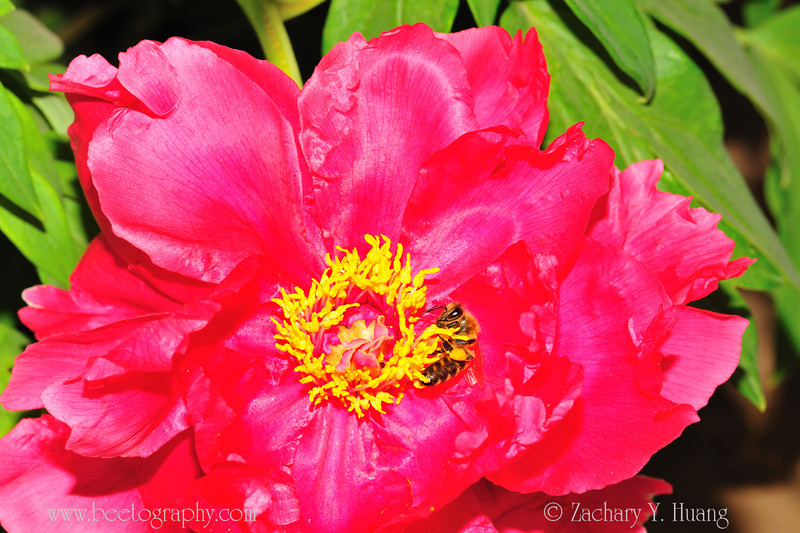
2. The same in a different posture. The bees seems to be getting both nectar and pollen, but perhaps mainly pollen.
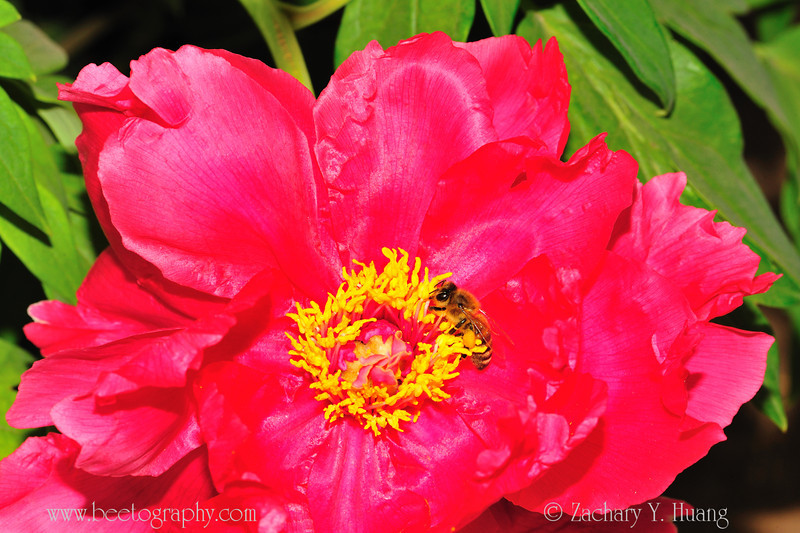
3. This one on a white flower.
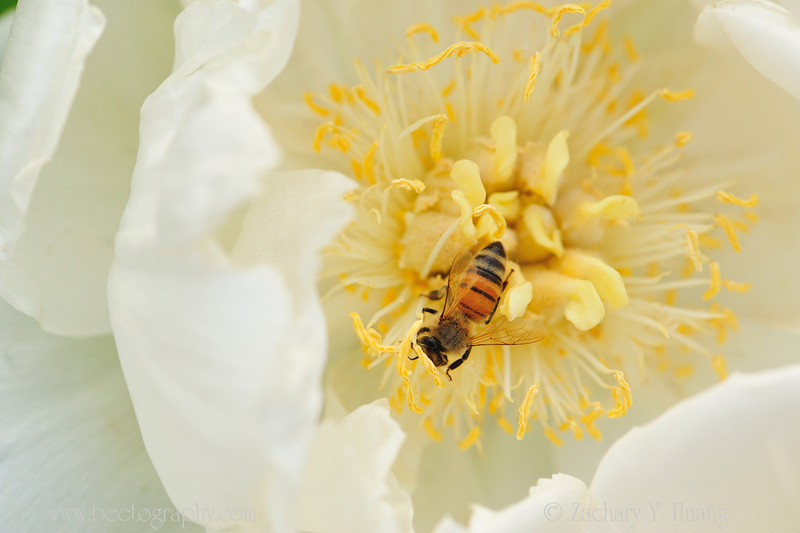
4. Another color, pinkish.
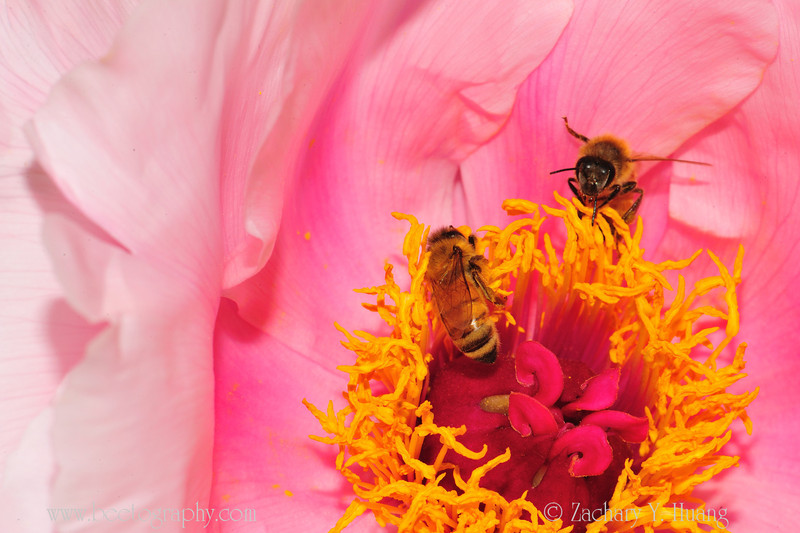
5. the same flower.
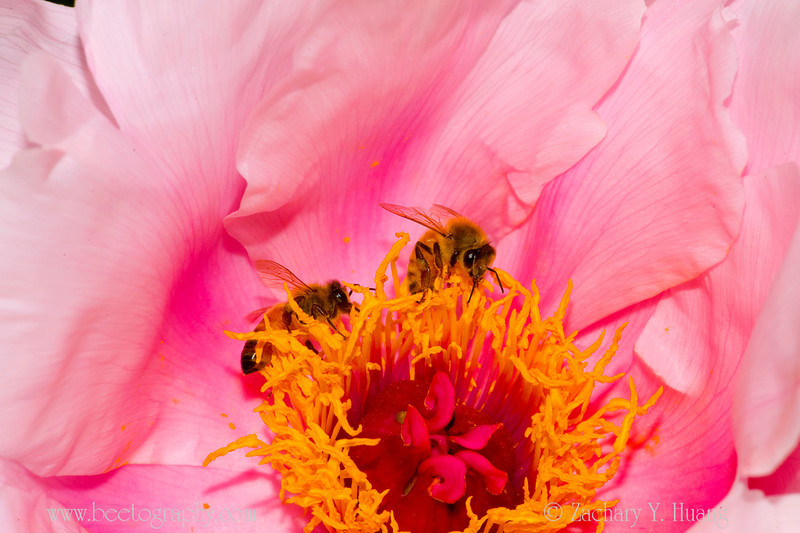
6. Do bees have aggregation pheromone or not? Notice no bees on the left one but more than 5 on the right one.
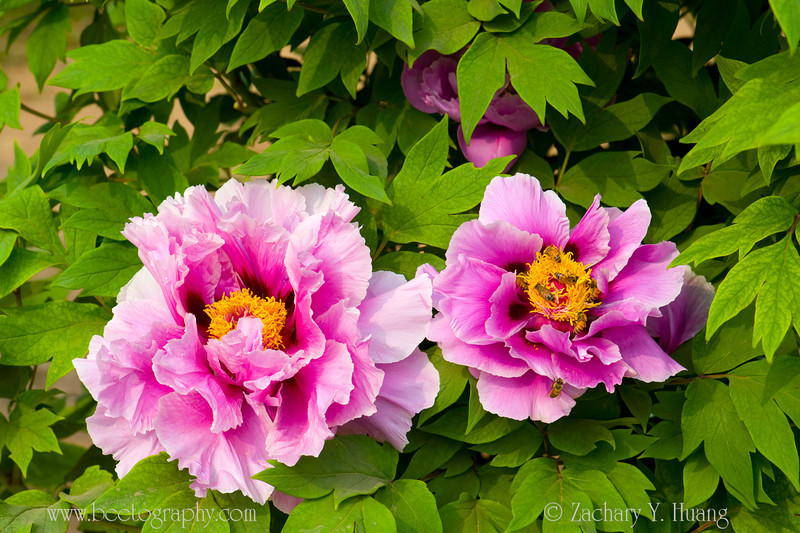
7. A closeup showing five bees.
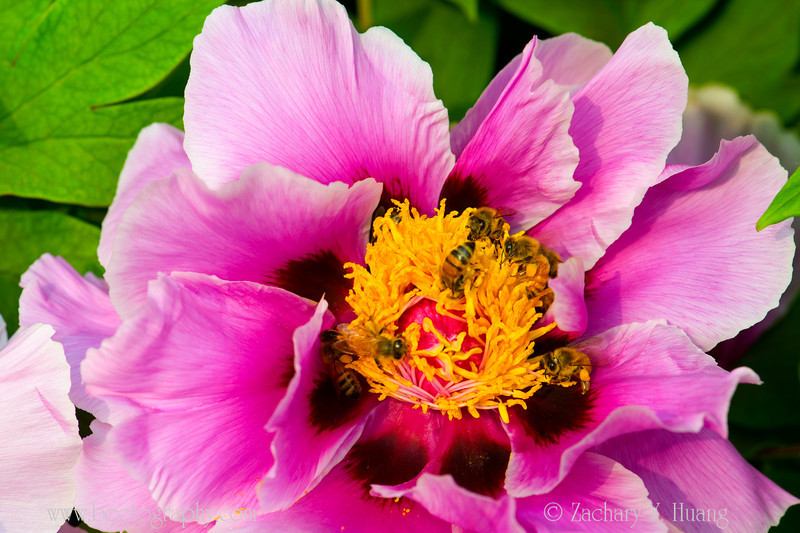
8. Even more bees now, nine?
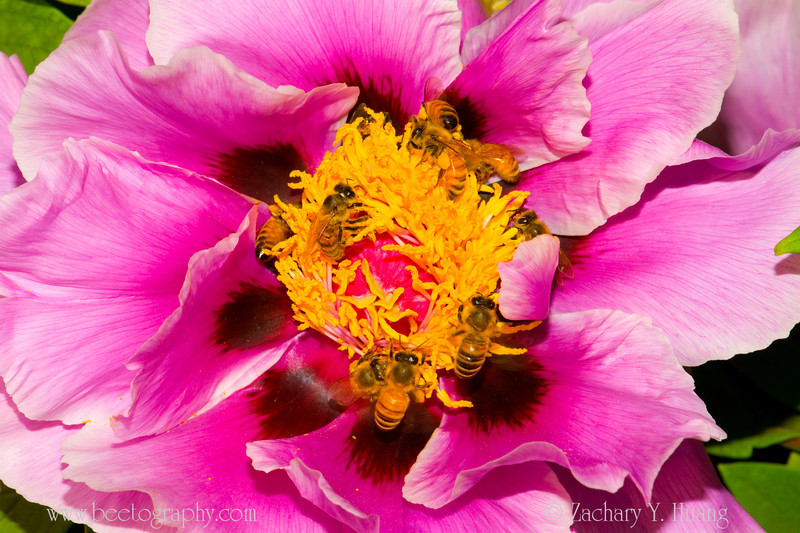
9. A white one with lots of bees also.
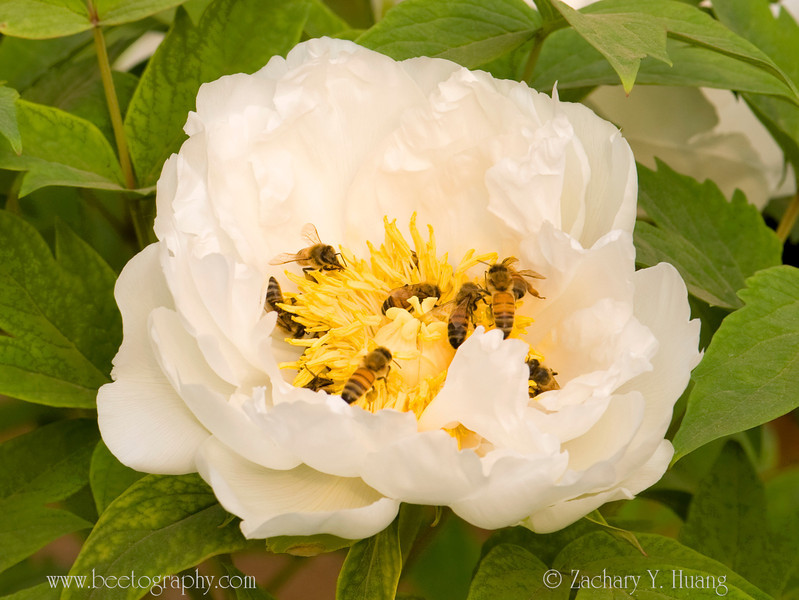
10. Closeup, 10 bees!
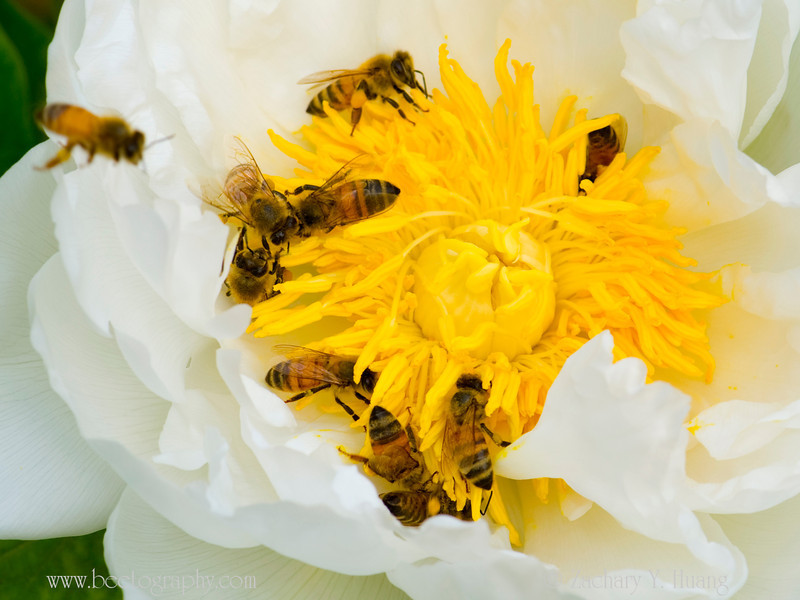
11. They were in a frenzy to dig for the pollen, biting and tearing the anthers. No, the Instagram link below this post is not aggressive behavior. Bees were just too excited when they work on large amounts of pollen.
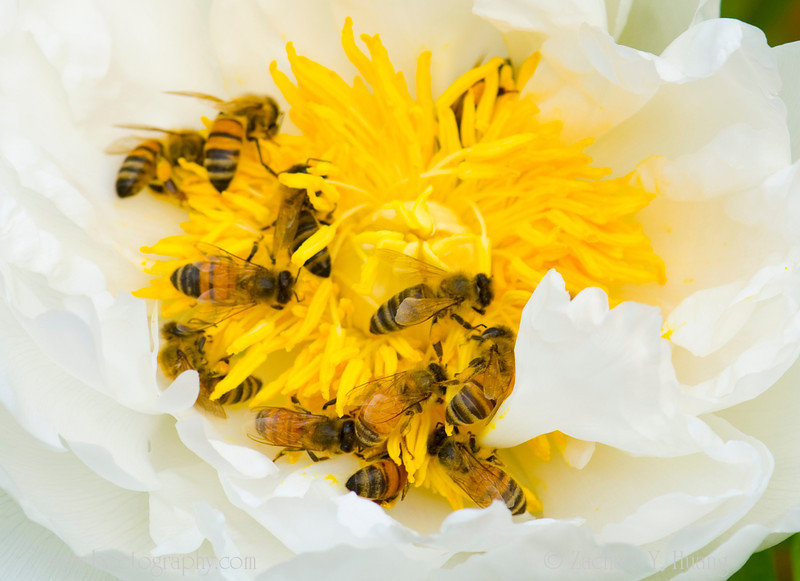
12. Closeup.
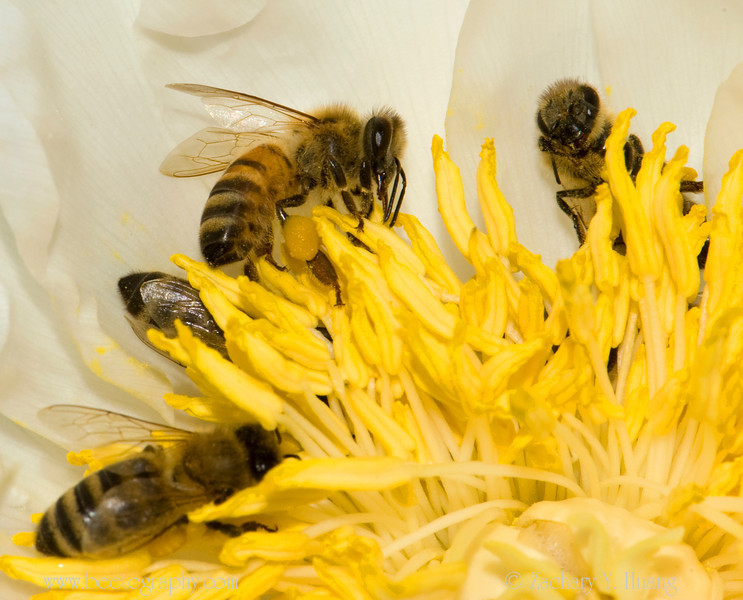
Thank you!
ZBAS = Zach’s Bee Attraction Score.
Updated May 10, 2012
Updated June 4, 2020

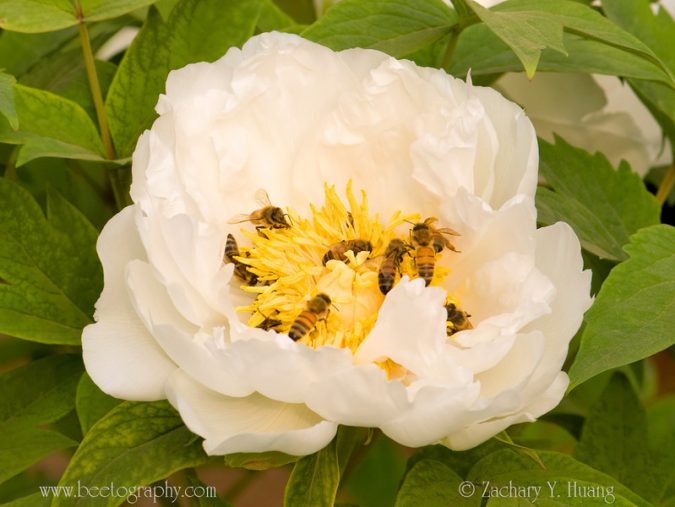
Hello, I saw your website as I love peonies as much as I love bees! Do you know what varieties of peonies are shown in the pictures, or even from experience the varieties preferred? Thankyou.xx
I have a white tree peonie that had bees collecting the pollen from, on closer inspection i noticed inside one of them a dead bee, the next day i was looking inside the same flower and noticed that a second bee had died, am i mistaken in thinking that the pollen was so strong that they were overpowered by the smell that they no longer was able to fly out?. I would be pleased for an answer thank you.
Bees are highly attracted to single peonies, which have a lot of pollen. Some of the doubles and exotics have so many petals that even if there is pollen present, the bee can’t reach it, which may cause them to ignore the plant.
I would not know the answer. Perhaps bees die of old age, or they were trapped by the flowers?
I noticed that they become also quite aggressive when they are together on a peony ‘digging’ for pollen, maybe the dead ones are victims of the ‘fight’? Have a look https://instagram.com/p/BjBBeSYBiWT/